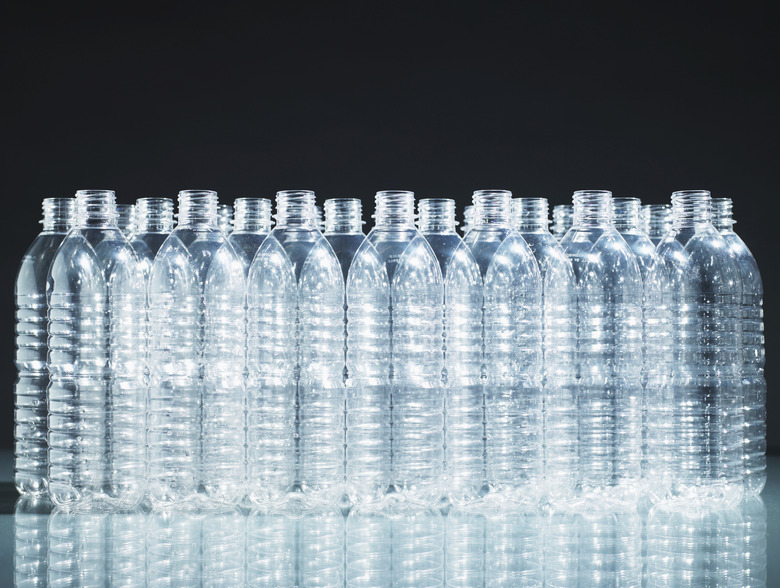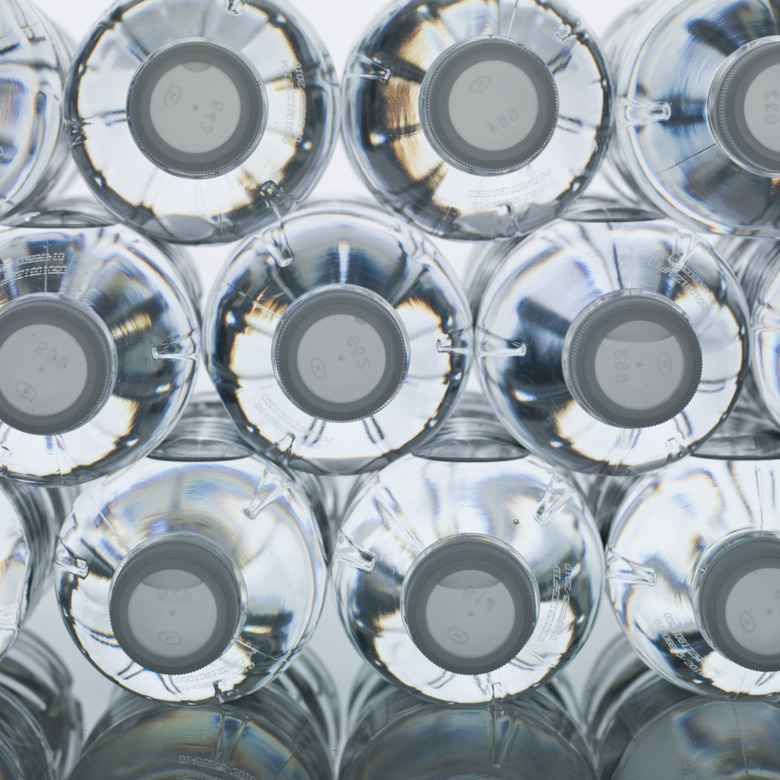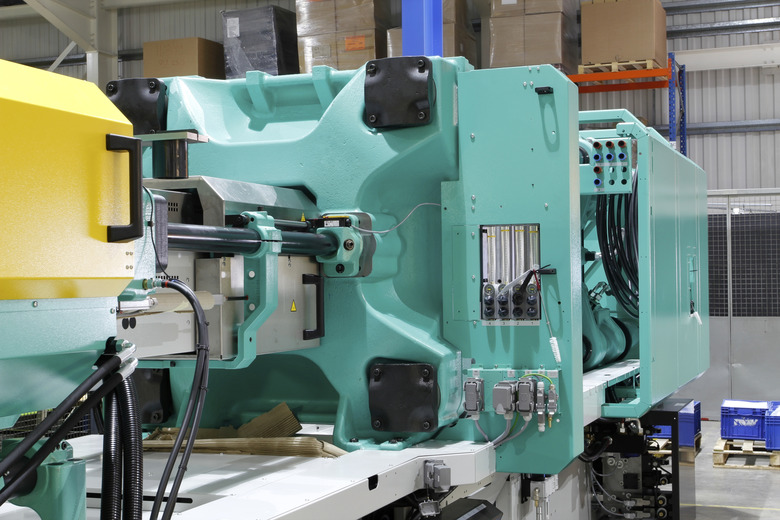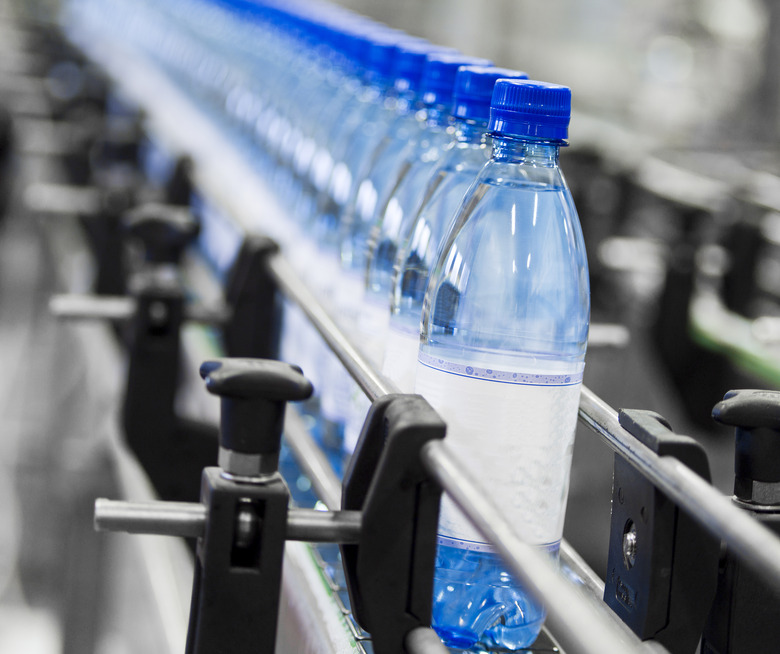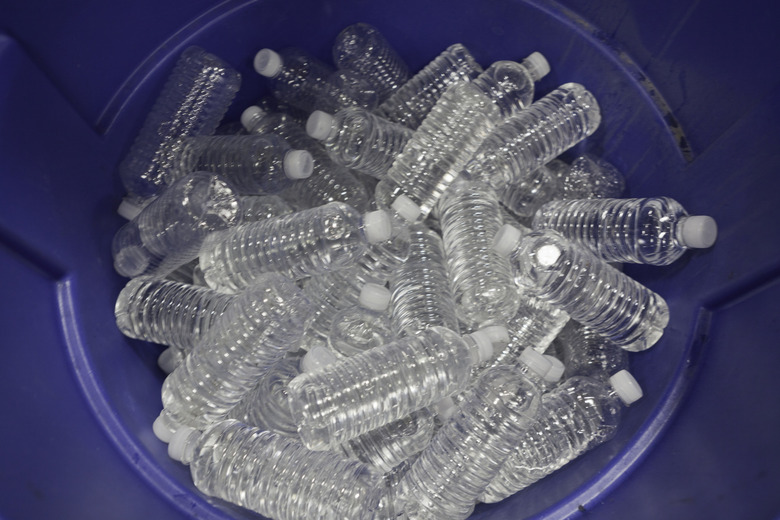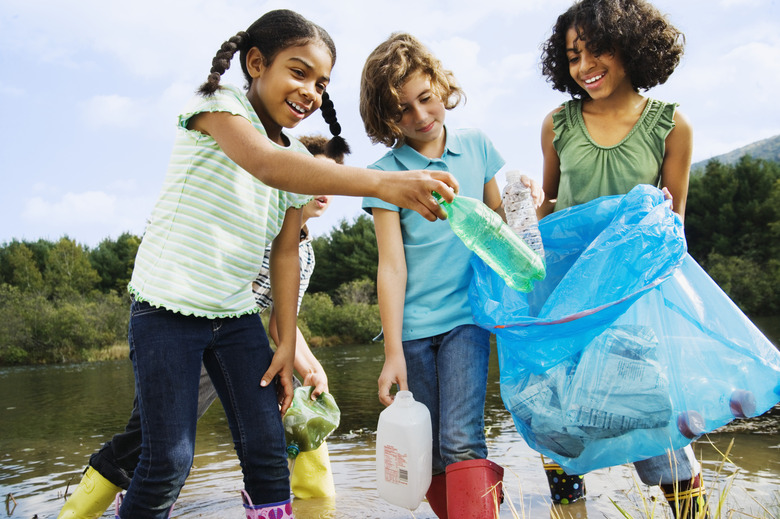Life Cycle Of A Plastic Bottle
Plastic is a hotly debated material: it's cheap to produce and easy to work with, but it can cause damage to the environment. Some of the arguments made about the material aren't based entirely on fact, so knowing a little more about the life cycle of a plastic bottle can help weed out the falsehoods.
Polymerization
Polymerization
Plastic begins its life as a semi-liquid, as a mixture of oil, ethylene, propylene and other materials. The mixture depends on the type of plastic being made, and the company that's making it. Each company has its own proprietary mixture–some plastics are harder and others are softer. If the bottles are recycled, they're made largely from melted down older bottles, in addition to some fresh materials.
Molding
Molding
There are a number of different ways that plastic is molded. In most processes, the plastic has already been cooled and worked into granules. Plastic granules or pellets are usually fed into a heating hopper, which melts them down and then pushes the melted plastic into a press or a device used to create a bottle. Injection molding forces that melted plastic into a mold shaped like a bottle. Blow molding is similar, but uses an air jet to blow a film of plastic into the mold–this is used to make hollow shapes.
Packaging
Packaging
The bottle is filled with the product it's made to contain, and a paper label is glued to the front. This is all done by machines, which grip the bottles, usually from the top, and bring them toward a filling machine which loads the bottles with a prescribed amount of liquid. These bottles are then grouped, boxed, and shipped to vendors and consumers.
Consumption and Collection
Consumption and Collection
The bottles, sold through vendors, or direct from the factory, are then consumed. After being emptied, they can be recycled. Many stores have redemption machines, and most cities collect recyclables along with trash. The plastics are sorted by type and sent to be recycled. That is assuming that the bottles are actually recycled–when they're thrown in with garbage, they will simply sit in a landfill and the story ends there.
Recycling
Recycling
The bottles are cut into flakes, washed, cleaned, and sold back to companies that will use them. The different types of plastics can be used in different ways, for everything from more bottles to plastic bags to carpeting and clothing. Most of the plastics recycled end up in clothing and fabrics. Plastic products are melted into the plastics mixture when a company begins production of the next set of plastic products.
Cite This Article
MLA
Turner, Grahame. "Life Cycle Of A Plastic Bottle" sciencing.com, https://www.sciencing.com/life-cycle-plastic-bottle-6690934/. 24 April 2017.
APA
Turner, Grahame. (2017, April 24). Life Cycle Of A Plastic Bottle. sciencing.com. Retrieved from https://www.sciencing.com/life-cycle-plastic-bottle-6690934/
Chicago
Turner, Grahame. Life Cycle Of A Plastic Bottle last modified March 24, 2022. https://www.sciencing.com/life-cycle-plastic-bottle-6690934/
